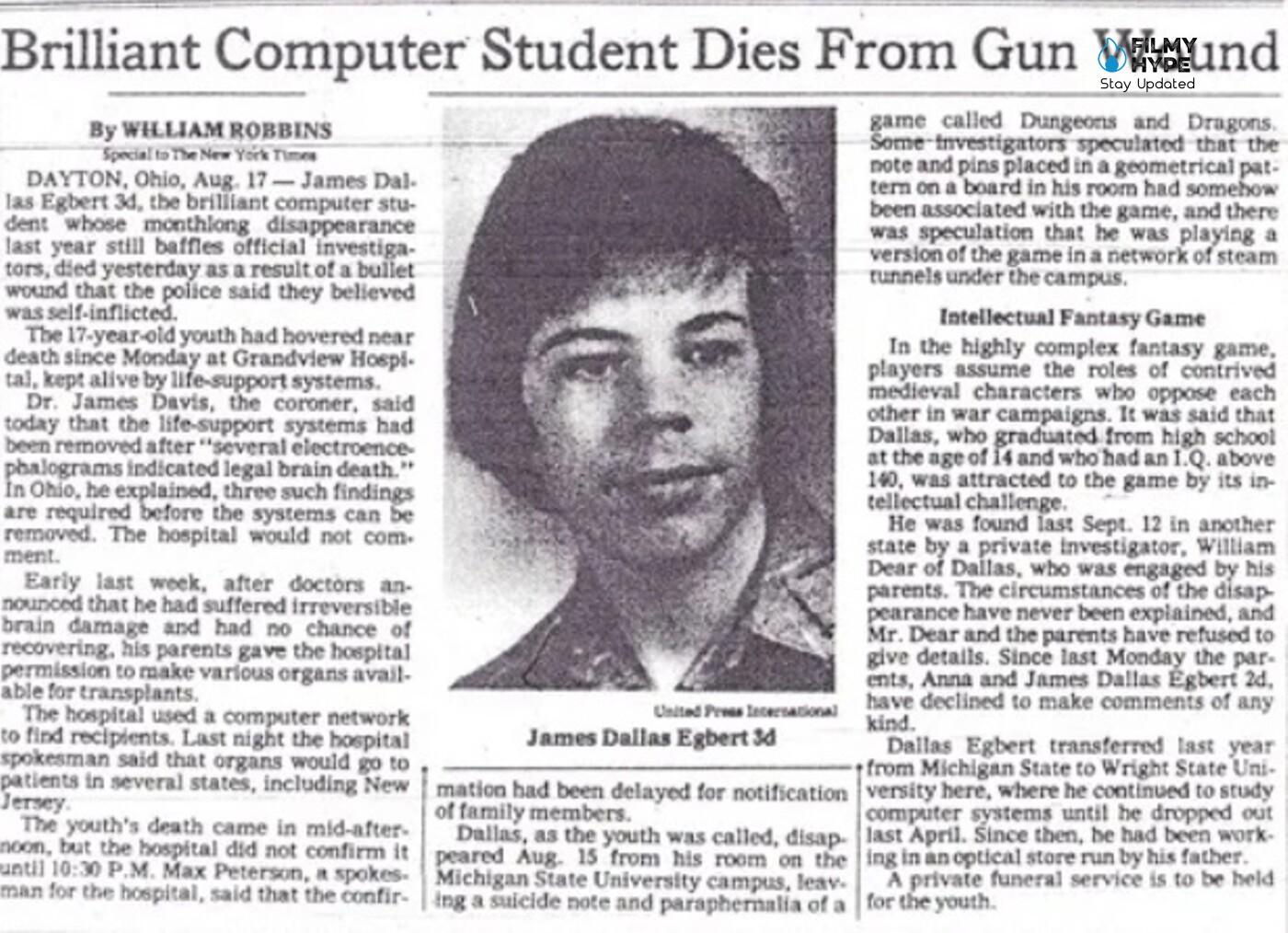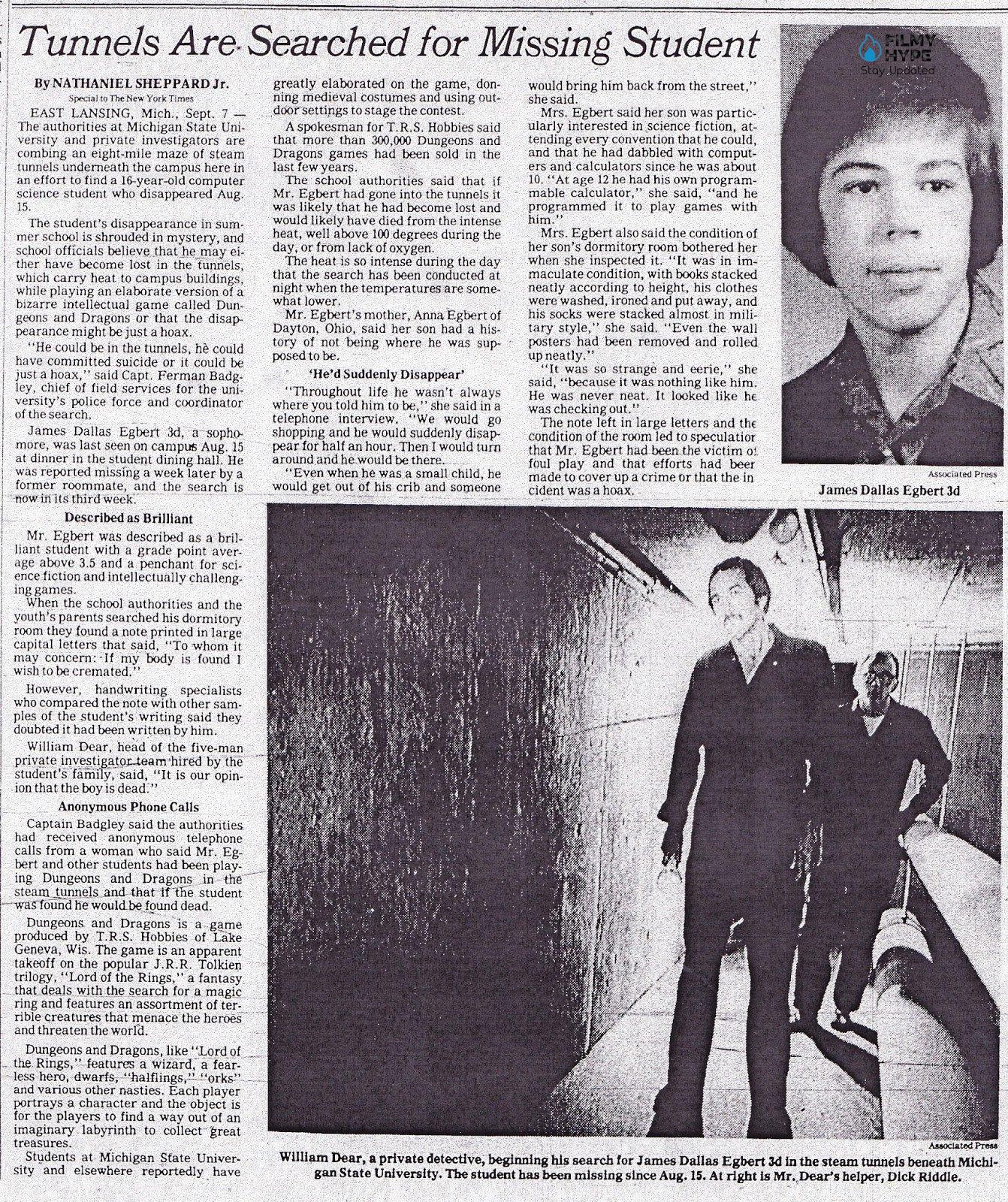Stranger Things Season 4: The True Story, Between Satanism, Hellfire Club and Dungeons & Dragons Game
The True Story Of James Dallas Egbert III, Is Stranger Things Hellfire Club Really Existed? How much truth is there behind Stranger Things 4 and the satanic ritual linked to Dungeons & Dragons? The true story comes from a news story.
Stranger Things Season 4 is decidedly darker than the previous ones both for the atmospheres that photography stores on the small screen, and for the references to different genre films, but also and above all for that satanic note that supports a piece of the plot, wedging in the pilot and pushing for the rest of the episodes to enjoy that horror streak that is so much the 80s.

Exactly, because it is now there for all to see: the 80s have never been so present as in this period of the 21st century! And if there is one thing that tormented the young people born in those wonderful and extravagant years it was precisely the satanic sects, whose fascinating and frightening aftermath continued in very alternating phases at least until the early 2000s, only to then disappear – from the media point of view – under the blows of another devilry. The result is iconic films (The Exorcist in primis) destined to become cults and to exorcise the fears of a devoted and bigoted society in which even a board game like Dungeons & Dragons rose to the role of the demonic carrier.
So, in the first episode of Stranger Things 4 the game that has practically guided the Netflix series from the beginning, giving body to the imagination of the young protagonists, takes on the contours of brutality in the hands of the press, which describes him as responsible for violent behavior, as well as a promoter of satanic adoration, of ritual sacrifice, sodomy, suicide, and murder. An unlikely but tangible bond in those years when a “nut” like Eddie (played by Joseph Quinn), the leader of the Hellfire Club group, would undoubtedly have been punishable.
Stranger Things Season 4 And The True Story Of James Dallas Egbert III, Who Died “Because Of” Dungeons & Dragons
It thus happens, as always, that an unhealthy idea, combined with a casual episode and a lot of bad journalistic activity, brings to the fore a game like Dungeons & Dragons, giving support to the plot of a successful TV series, which in this case takes its cue just from a real fact. We are speaking, exactly, of the disappearance of sixteen-year-old James Dallas Egbert III (October 29, 1962 – August 16, 1980), who disappeared from the Michigan State University dormitory on August 15, 1979, entering the steam tunnel of the same university with the aim of commit suicide, leaving behind only a small farewell note.

But the methaqualone he had ingested did not have the desired effects: the next day James Dallas Egbert III woke up, as usual, going to hide at a friend’s house. In the frantic search for the boy, the police advanced hypotheses, but to have a predominant role in the misinterpretation of D&D in this affair was William Dear, the investigator hired by the young man’s family. Dear theorized a link between the boy’s disappearance – suffering from depression and tested by drug addiction, pressure from his parents, and the difficulty of accepting his homosexuality – and Dungeons & Dragons in the light of certain statements by some students, who reported having played several sessions in the steam tunnels located below the school. Hence the hypothesis that he had disappeared during this meeting and the related embroidery of the print.
During his escape, James Dallas Egbert III took refuge in other hiding places, again attempting suicide – in New Orleans, he unsuccessfully tried to take his own life with a cyanide compound. Finally, finally found in Morgan City, Louisiana, the young man was given into custody by his uncle, Marvin Gross. However, his malaise led him to attempt suicide again and this time he succeeded: on August 16, 1980, he self-inflicted gunshots, perhaps unaware of what would have triggered, from a media point of view, his death.

From that moment it was impossible not to link the tragedy to Dungeons & Dragons, obtaining on the one hand fear and rejection of board games, on the other fascination and significant increase in sales. Suffice it to say that in 1982 a TV movie was produced, Labyrinths and Monsters (Maze & Monsters), directed by Steven Hilliard Stern starring a young Tom Hanks, based on the novel It was just a game by Rona Jaffe. In short, the idea of the demonic had invaded the minds of many, especially Christians, who in those images saw everything that their religion would never have reflected.
The Monsters of Dungeons & Dragons Go Beyond The Game!
Returning to Stranger Things, the Duffer brothers’ series has taken a lot of hands from D&D, literally taking the characters out of the game to introduce them into the fictional reality given to us by Netflix. This is the case of the Demogorgon, which dominated the first season of Stranger Things, whose features can be found in medieval Christian texts, as well as in John Milton’s Paradise Lost.
However, especially in the beginning, the game winked at fantasy authors such as JRR Tolkien and made sharp references to the battles of the middle age and the vast world of medieval beliefs, such as the prohibition of clerics to draw blood with edged weapons. or the fact that they, starting as acolytes, can become vicars, bishops, or even patriarchs. Later the co-creators of D&D, Gary Gygax, and Dave Arneson, thought of introducing other Catholic elements as well, such as angels, further distancing the game from Judeo-Christian practitioners.
The parallelism with the occult is associated, in the 70s, with the fashion of the New Age, the love for astrology, and the tarot cards, which hyperbolize certain aspects of D&D, while other players have diverted these nuances of the game towards the magical world, carrying out historical research that the creators themselves had not even thought of and giving ideas for fantasy works, such as The Dying Earth by Jack Vance. However, these were also associated with the claims of those who tried to truly connect the magic evoked by the game in real rituals, as if there could be a link between psychic powers and game moves. In this regard, there was no lack of false finds of old manuals, passed off as rare manuscripts.
All this love for D&D has turned and for some into fear, the same that in Stranger Things is cut into slices and explodes in acts of gratuitous violence. A kind of witch hunt that attracted the ire of fundamentalists, officially opened the dance in Utah, Heber City, in 1980. A bit like it also happens in the Netflix series, in those years in a high school the Heber City’s club received the accusations from a group of parents because of the outrageous quotes contained in the game: the resurrection, the ability to walk on water, but also and above all a passage that specified the fact of “serving one or more divinities”. A phrase, the latter, seen by fundamentalists as a rite of exchange; a formula made to say to children to serve, without their knowledge, dark forces.
Does Stranger Things Hellfire Club Exist?
There were even those who thought of burning a bunch of copies of Dungeons & Dragons at the stake, as in the best dictatorial tradition, and who went too far worse accusations. Specifically, the reference is to a case that caused a particular sensation in 1982, namely the suicide of the young Irving “Bink” Pulling II, which led his mother, Patricia, to embark on an anti-D & D crusade and to found the BADD – Bothered About Dungeons & Dragons, even suing the principal of the school attended by his son (accused of having allowed the demonic game to take place within his structure) and attributing the death of the young man to a curse launched by another player of D&D.
News of this kind appeared continuously in the newspapers at that time and Stranger Things lets us glimpse some aftermath, putting these accusations on the lips of the protagonists, who instead defend the game, ridiculing the accusations addressed to it. But the fact remains that the media action exercised in the 80s was incredible and exhausting, even if it somehow deserves the credit for having made people appreciate this game and have led it to this day.
Stranger Things 4 – How do Things Happen?
Net of everything, a real relationship between the suicides and Dungeons & Dragons was never established. In all cases examined what transpires is a difficulty on the part of the victims in distinguishing reality from fiction; a propensity to the occult that was convenient, from a commercial point of view to the publishers of the board game, even if at a certain point they found themselves forced to eliminate all demonic references, replacing words like “Devil” and “Demon” with fictitious terms such as “Tanar’ri” and “Baatezu”.
Nonetheless, when Wizards of the Coast released their edition of Dungeons & Dragons in 2000, those demons and devils were back again in all their glory, and certainly, Stranger Things has given new life to this famous’ 80s game, this time and for now without excessive bigoted criticism!
In conclusion, it is therefore clear that Stranger Things 4 traps a partially true story in fiction, letting the terror of those who saw the dark side of the gods exude in a child’s play. In the Netflix series, these news stories rise from the guideline of a more complex story in which evil materializes in multiple forms, exploding in death, in the hunt, in the fear of knowing and recognizing each other, as well as in a series of quotes and tributes typically years ’80.



